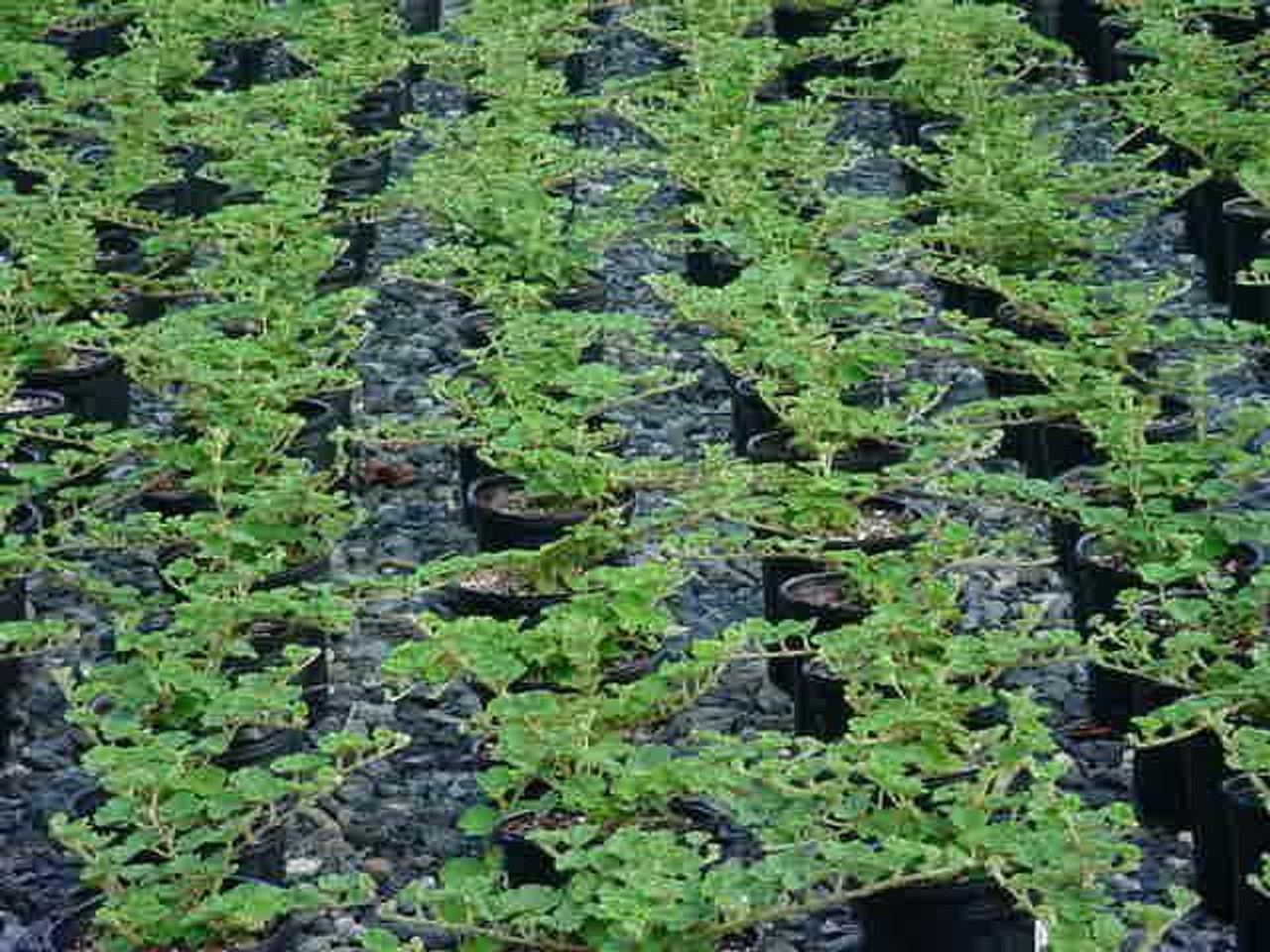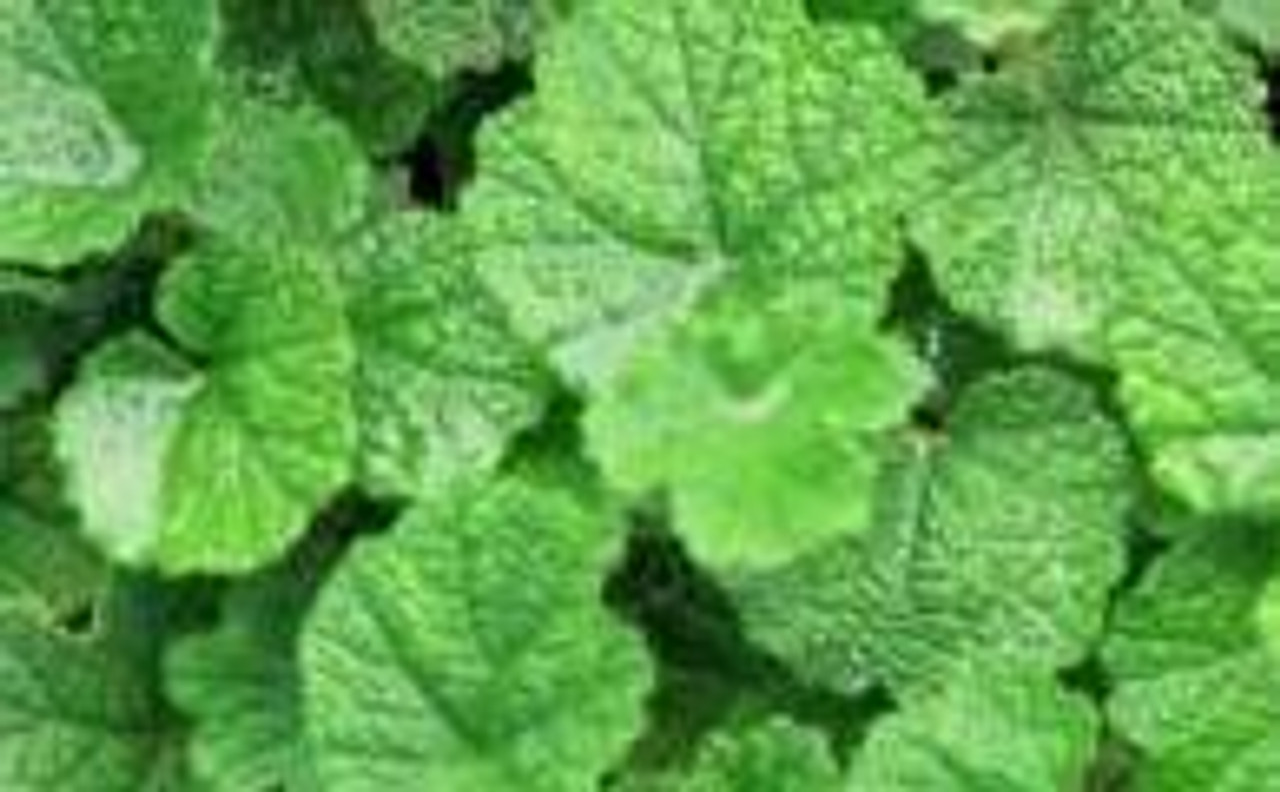Product Description
Rubus hayata-koidzumii is better known (incorrectly) as Rubus calcinoides (18)ct Flat
Common names: Creeping Raspberry, Crinkle-leaf Creeper, Taiwanese Creeping Rubus, Creeping Bramble, and Emerald Carpet.
Sun to Medium Shade
Zones 6 to 9
Grows 3 to 6 inches high and spreads in all directions.
Durable, fast-growing evergreen groundcover that takes sun or shade. The thick, coarse-texture, dark green foliage adorns stem runners that root as they creep along the ground. Creeping raspberry is aggressive, but not invasive. It doesn't climb trees or smother shrubs. Easily control it with mechanical edging.
In spring and summer, the leaves are shiny dark green above and gray-green below, turning to burgundy in fall and winter. Small white midsummer flowers turn to tiny fruits in late summer. Fruit is edible and tasty, but tiny, so leave them for the birds.
Plant 4 to 6 feet apart to allow room to spread. Full sun is best, although plants will adapt to partial shade. Too much irrigation or wet soils is not a good thing. A light trimming with the mower in late winter will encourage new growth in spring.
A low-growing member of the genus Rubus which also includes better known edibles such as the blackberry, raspberry, boysenberry, thimbleberry, etc. Originally from Taiwan where it grows at high elevations.
Rubus hayata-koidzumii, also known as the creeping raspberry or Taiwanese creeping bramble, is a versatile and attractive groundcover plant with a unique appearance and several uses in the landscape. Here is a summary of its key features and growing conditions:
- Creeping Habit: As the name suggests, this plant has a creeping or trailing growth habit, forming a dense mat of foliage that can spread up to 3 feet or more. It typically stays low to the ground, reaching only 1-3 inches in height.
- Crinkled Leaves: The deep green leaves are notably crinkled or wrinkled, giving them a distinctive texture. This, along with their slightly rounded shape and 3-5 lobes, adds visual interest to the landscape.
- Seasonal Color Changes: In autumn, the foliage takes on attractive bronze or reddish hues, providing additional seasonal interest.
- Flowers and Fruit: In mid-summer, the plant produces small, white flowers that are often hidden amongst the foliage. These are followed by edible, aggregate fruits (similar to raspberries) that range in color from yellow to orange-red. While not as flavorful as traditional raspberries, they are still a sweet treat.
- Adaptable and Tough: This Rubus species is known for its resilience and ability to thrive in challenging conditions, including dry slopes, areas with fluctuating moisture, and even deep shade.
Growing Conditions:
- Hardiness: Generally hardy in USDA zones 7-9.
- Light: Tolerates a wide range of light conditions, from full sun to full shade.
- Soil: Adaptable to various soil types but prefers well-drained soil.
- Moisture: Drought-tolerant once established, but appreciates regular watering during hot, dry periods.
Uses in the Landscape:
- Groundcover: Excellent for covering large areas, suppressing weeds, and preventing erosion on slopes.
- Underplanting: Thrives under trees and shrubs where other plants struggle due to shade and root competition.
- Containers and Hanging Baskets: Its trailing habit makes it a good choice for containers and hanging baskets, where its foliage can cascade over the edges.
- Erosion Control: Its dense growth habit helps stabilize slopes and prevent soil erosion.
Maintenance:
- Low Maintenance: Generally, requires little maintenance once established.
- Edging: May require occasional edging to control spreading if desired.
Additional Notes:
- Not Invasive: While it spreads vigorously, it is not considered invasive and will not climb trees or choke out neighboring shrubs like some other Rubus species.
- Wildlife Value: The flowers attract pollinators, and the fruits are eaten by birds.
- Synonym: Rubus hayata-koidzumii is sometimes listed as Rubus calycinoides or Rubus rolfei in the horticultural trade.
If you are looking for a tough, adaptable, and attractive groundcover with unique foliage and the added bonus of edible fruit, Rubus hayata-koidzumii is an excellent choice!
Eighteen (18) plants in 3.5-inch containers per flat (or tray).
Other Details
The most important part of the plant is its root system. Healthy roots are the foundation of a healthy, vibrant plant. The type of plug container used is based on the specific needs of the plants. Perennials offered as bare root traditionally perform better when planted as bare root.Planted in a specialized mix, potted plants have well established root systems. Top growth stage will vary depending on the current life cycle and time of year when shipped. In Winter and early Spring dormant plants may be shipped. Dormant plants may be planted right away, even before the last frost date.
Most bare root varieties are field grown for at least one season, though Hemerocallis and Hosta are grown for two seasons. The bulk of the soil is removed during the harvesting process and the tops of most varieties are trimmed back to the crown. They are graded, packed in shredded aspen or sphagnum moss and stored in freezers until ready to be shipped.
See our Container Sizes and Bare Root Perennials pages for more information.
Plant information and care is provided in the Overview section, Plant Genus Page and general information is provided in the Planting Care & Guides. Additional questions can be asked on each Plant page.
Plant Spacing: Using the maximum mature spread or width of a plant to guide spacing, ensures space to grow to full size. To fill an area sooner, plant them closer together. Just remember, future thinning or transplanting may be needed.
Water: Keep a close eye on newly planted perennials, especially throughout the first growing year. Most early plant loss is due to too much or too little water!
Product Videos
Custom Field
Product Reviews
2 Reviews Hide Reviews Show Reviews
-
Amazing plants twice
I was so amazed with my first order of these 2 years ago that I bought more. They arrived green, fresh, and moist. I had them planted the same day they arrived. Looking great.
-
Great product, excellent customer service.
I was looking locally for some non-flowering partly-sun ground cover. I came across Creeping Raspberries (Rubus Calcinoides), but was unable to find anyone locally with them in stock. I found BloomInDesigns while searching online. I saw that the planting season was still too early and had the option to pre-order. Due to the long winter we had this year, the customer service worked with me on my order. Their recommendation was to wait til the plants were more developed, I am glad that I listened to them. The plants came moist, healthy, and with well developed roots. Thanks.















